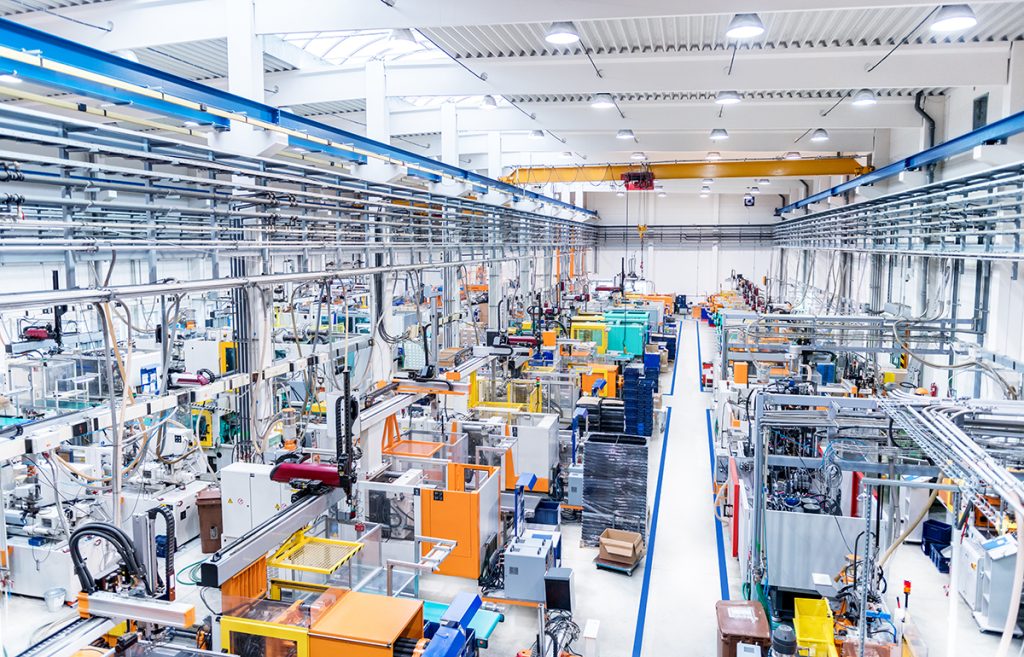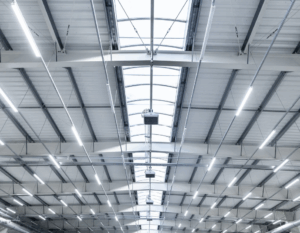If you’re like most business owners, you’re always looking for ways to reduce costs and increase efficiency. That’s why LED retrofit is such a attractive option for many industrial businesses. Not only can LED lighting save you money on your energy bill, but it can also improve the quality of your light and last much longer than traditional bulbs. In this blog post, we’ll explore the advantages of LED retrofit and how it can benefit your business.
Introduce the topic of LED lighting and its advantages over traditional lighting methods
LED lighting technology has been gaining ground in the industrial lighting market due to its advantages over traditional lighting methods. LED lights consume significantly less energy than their traditional counterparts and also have longer lifespans, resulting in lowered energy costs for businesses that incorporate LED lighting into their operations.
LED lighting is also especially suited to a lighting retrofit environment since it produces more light per watt than other lighter sources with no need for additional heating elements. LED lights are becoming increasingly popular for factory and industrial settings due to the low cost of ownership, low energy usage, and their long lifespan. Ultimately, LED lighting has transformed the way businesses look at lighting options and will be here to stay for the foreseeable future.
Discuss how industrial businesses can benefit from LED retrofit projects
LED lighting retrofit projects offer an array of benefits to an industrial business. LED technology is up to 80 percent more energy efficient than traditional methods, resulting in fewer resources consumed and massive reductions in operational costs. LED lighting also typically has a longer lifespan than incandescent bulbs and fluorescent tubes, leading to less frequent replacement and repair.
LED retrofit projects also offer additional cost saving potential by allowing for automated systems that can dim or switch off lights when occupancy levels are low. In addition, LED lighting produces significantly less heat than other lighting technologies, improving environmental controls inside the building and relieving the strain on air conditioners and fans. Ultimately, LED retrofit projects are one of the most cost effective methods for industrial businesses to improve their operations.
Outline the steps necessary to complete an LED retrofit project
LED lighting retrofit projects offer an innovative and cost-effective way to modernize industrial lighting setups. In order to complete a LED retrofit project, it is first necessary to assess the existing setup and identify LED components that would be suitable replacements for existing equipment.
Once LED components have been identified, bids should be solicited from LED contractors preferably with experience in LED retrofit projects. Finally, LED installation should be carried out according to established safety and quality standards, with all necessary electrical connections made before the LED lights are operationalized and put into use.
Describe the energy savings and other benefits that come with using LED lights
LED lighting is becoming increasingly popular due to its variety of advantages over traditional lighting sources. LED lights consume significantly less energy than other types of lighting, making LED retrofitting an ideal strategy for major industrial companies and business owners looking to reduce their carbon footprint. LED lighting also has a much longer lifetime than traditional bulbs, leading to a considerable reduction in the need for regular maintenance, as well as potential costs related to replacing the bulbs on a frequent basis.
LED lights are also known for providing superior light quality compared to other options, providing more accurate illumination and more diffusion of light across a large area; that is perfect for industrial settings that need substantial amounts of coverage and uniformity. LED lights offer all these benefits while being inexpensive compared to other lighting sources, making LED lighting an attractive option for any energy conscious organization.
Offer tips for making the switch to LED lighting in an industrial setting
LED lighting is a great choice for an industrial setting, as its energy efficiency and long lifespan means running costs can be significantly reduced. LED also provides greater control over the type of lighting required, allowing a tailored light level that’s just right for the given task. To ensure a successful LED lighting retrofit in an industrial setting, it’s important to choose LED fixtures that are matched to the dimensional and performance requirements of your space.
Working with an LED expert or specialist contractor can help ensure you are using LED luminaires with the right distribution, lumen output and power consumption. As LED technology continues to evolve, careful research should also be conducted to identify which LED products best meet particular industry-specific needs. Taking time to understand all the options available will mean you end up with improved functionality and enhanced energy savings down the line.
As we’ve seen, there are numerous advantages to making the switch to LED lighting in an industrial setting. Not only do LED lights last longer and use less energy than traditional lamps, but they also emit far less heat and produce a more natural light that can help improve worker productivity. Switching to LED lighting is a big investment, but one that will undoubtedly pay off in the long run both for your business and for the environment.
If you’re interested in retrofitting your facility with LED lights, Daisy Energy has the experience and expertise to get the job done right. Contact us today to learn more about our services or explore our website for more information on LED lighting.




































